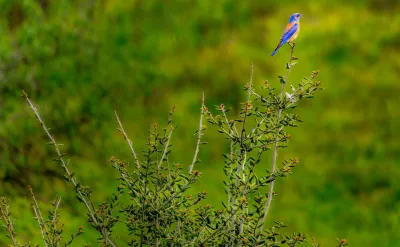Following the devastation of the Eaton Fire, the return of wildlife and the regrowth of native plants are offering powerful signs of resilience and renewal.

Four months after the devastating Eaton Fire swept through the Angeles National Forest and nearby communities, signs of nature’s resilience are visible across the burn area. New greenery is flourishing, birds have returned, and trail cameras operated by volunteers documented a mountain lion reappearing in the region. Kristen Ochoa, a UCLA professor and founder of the Chaney Trail Corridor Project, leads the effort to monitor the area’s recovery, using donated trail cameras and iNaturalist to map wildlife and plant regrowth.
As reported by Jaimie Ding, Ochoa began documenting the corridor in 2024 to showcase its biodiversity and protect it from planned development. Though the fires destroyed previous cameras, volunteers quickly reinstalled new ones, capturing the ecosystem’s revival. Local residents who lost their homes find hope in witnessing nature’s comeback, particularly in untouched stream areas that provided refuge for wildlife. Heavy rains following the fires accelerated regrowth, with resilient native species like the San Gabriel oak sprouting fresh green shoots, though invasive plants like yellow mustard now pose new challenges.
The recovery effort extends beyond simple observation, with UCLA scientists collaborating to study how bats and birds are adapting post-fire. Volunteers have spotted bobcat tracks, fresh deer prints, and witnessed red-tailed hawks performing courtship flights over the burned landscape. While challenges remain, the thriving wildlife and blooming plants offer a powerful symbol of renewal and perseverance for a community still healing from loss.
FULL STORY: Left alone by humans, wildlife returns to the Eaton Fire burn area

Planetizen Federal Action Tracker
A weekly monitor of how Trump’s orders and actions are impacting planners and planning in America.

Maui's Vacation Rental Debate Turns Ugly
Verbal attacks, misinformation campaigns and fistfights plague a high-stakes debate to convert thousands of vacation rentals into long-term housing.

San Francisco Suspends Traffic Calming Amidst Record Deaths
Citing “a challenging fiscal landscape,” the city will cease the program on the heels of 42 traffic deaths, including 24 pedestrians.

Amtrak Rolls Out New Orleans to Alabama “Mardi Gras” Train
The new service will operate morning and evening departures between Mobile and New Orleans.

The Subversive Car-Free Guide to Trump's Great American Road Trip
Car-free ways to access Chicagoland’s best tourist attractions.

San Antonio and Austin are Fusing Into one Massive Megaregion
The region spanning the two central Texas cities is growing fast, posing challenges for local infrastructure and water supplies.
Urban Design for Planners 1: Software Tools
This six-course series explores essential urban design concepts using open source software and equips planners with the tools they need to participate fully in the urban design process.
Planning for Universal Design
Learn the tools for implementing Universal Design in planning regulations.
Heyer Gruel & Associates PA
JM Goldson LLC
Custer County Colorado
City of Camden Redevelopment Agency
City of Astoria
Transportation Research & Education Center (TREC) at Portland State University
Jefferson Parish Government
Camden Redevelopment Agency
City of Claremont





























